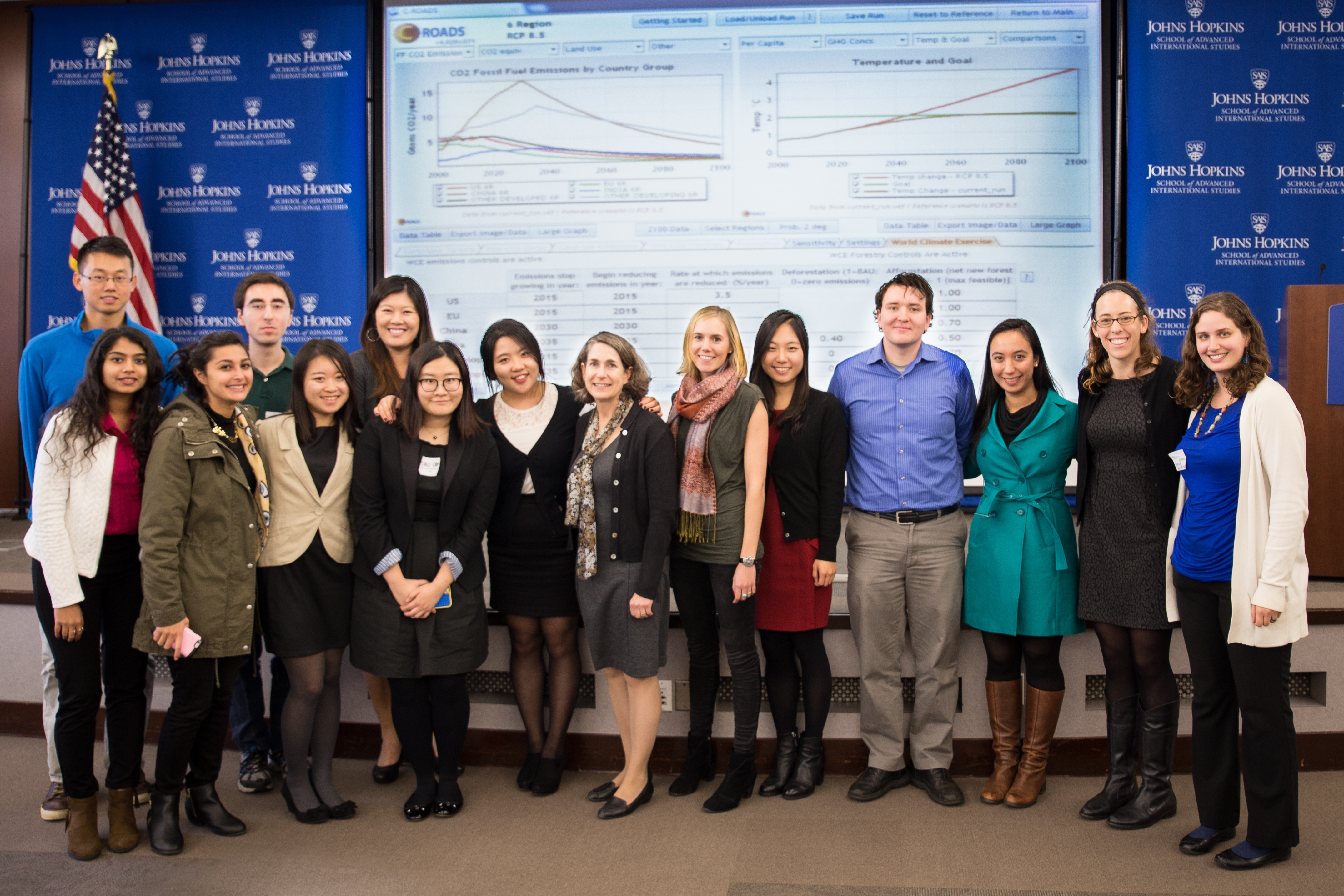Energy, Resources and Environment Program Hosts Mock Climate Negotiation

The delegates crowded around the table, negotiating commitments towards reducing greenhouse gas emissions, halting deforestation, and financing a global fund for low-emission and climate-resilient development. China, India, the United States, the European Union, other developed countries, and other developing countries – each came with their own set of priorities and bargaining points. Climate activists and fossil fuel lobbyists were present, too. Now, led by the conference Chairwoman, they each sought to balance individual needs with global demands.
“The developed world had its turn industrializing without limitation on emissions; now it’s our turn,” said the representative from India. “We have already done so much to combat climate change,” said the delegate from the European Union. “If we’re going to increase our pledge, we need a commitment that the United States will do the same.”
This scenario is not unlike that expected to be seen at the 21st session of the Conference of the Parties (COP 21) to the United Nations Framework Convention on Climate Change (UNFCCC) in Paris starting later this month. However, in reality, the actual scene portrayed above took place much closer to home – right here on the Washington campus on Friday, November 13.
Each assigned the role of a country delegate to the UN or an observer organization representative, twenty SAIS students – including nine from the cross-listed Conflict Management and Energy, Resources & Environment (ERE) course, “Environmental Negotiations” – joined together this month to see if they could negotiate a global climate deal capable of limiting global warming to no more than two degrees Celsius (the widely recognized benchmark limit for avoiding the worst impacts of climate change).
The event began with three brief “in-session workshops” on climate change, environmental negotiations, and systems thinking led by professors from the ERE program. Afterwards, the students, in their roles as delegates, cycled through three rounds of proposals, negotiations, and revisions over the span of the three-hour mock climate conference, which was organized based on the climate change negotiations simulation “World Climate” exercise designed by Climate Interactive. At the end of each round, commitments towards emissions reductions, land use change, and financing of the Green Climate Fund were entered into Climate Interactive’s award-winning, peer-reviewed, open-source, and freely available computer simulation “C-ROADS,” a model that has been recently employed by the White House and featured in the New York Times.
As Climate Interactive employee – and SAIS alumna – Shanna Edberg describes, “World Climate is a leadership-building game that allows participants to discover for themselves the science of climate change, as well as the great efforts it will take to combat it in the diplomatic and political arena. Our research shows that it leaves participants both more educated and more motivated to take action. One of the simulator's great advantages is that it gives instant feedback – you know immediately the global effect of your policies.”
And so, as the computer model graphed the output of the commitments on global temperature rise, participants waited with bated breath to see if their negotiations succeeded in reducing the forecasted global temperature rise from the “business as usual” (BAU) level of 4.5 degrees Celsius by 2100 to the more climate-safe level of 2 degrees C. By the first round, the countries’ initial proposals resulted in an estimated global temperature in 2100 of 3.1 degrees C. In round two, staunch negotiating led to a modest drop to 2.9 degrees C. By round three, with pressure mounting, the delegates joined forces and managed to negotiate a final set of commitments capable of reducing global warming to 2.4 degrees C – not quite down to the 2.0-degree C mark, but a far cry from the potentially devastating 4.5-degree C BAU scenario.
While negotiating an environmentally and politically viable climate deal can be a daunting task for both simulation participants and real UN delegates alike, mock negotiation exercises like this one at SAIS prove there is reason for hope. As Hyea Won Lee, a first-year ERE student playing a developing nation representative, noted, “It was definitely challenging to protect my position and carry forward with the international action at the same time. However, this experience made me realize the invaluable time and efforts that the global community has devoted to have come this far, and to become more positive that we can certainly make further progress."
The designated Chairwoman of the mock negotiation, second-year ERE student Morgan Rote, expressed a similar sense of both challenge and accomplishment. “The mock negotiation was a great experience,” she said. “It put us in the shoes of the negotiators and underlined just how complex the climate change challenge is. Using the [Climate Interactive] modeling software, we got a sense of which country commitments could actually move the needle.”
At the event on campus, students like Lee and Rote took on the roles of country leaders and delegates for a mere three hours. In the future, when these students, as SAIS alumni, become tomorrow’s global leaders and UN delegates, experiences such as this will help equip them with the skills and aptitude to inspire a lifetime of positive change in the world and definitively prevent global warming from surpassing the 2-degree Celsius line.